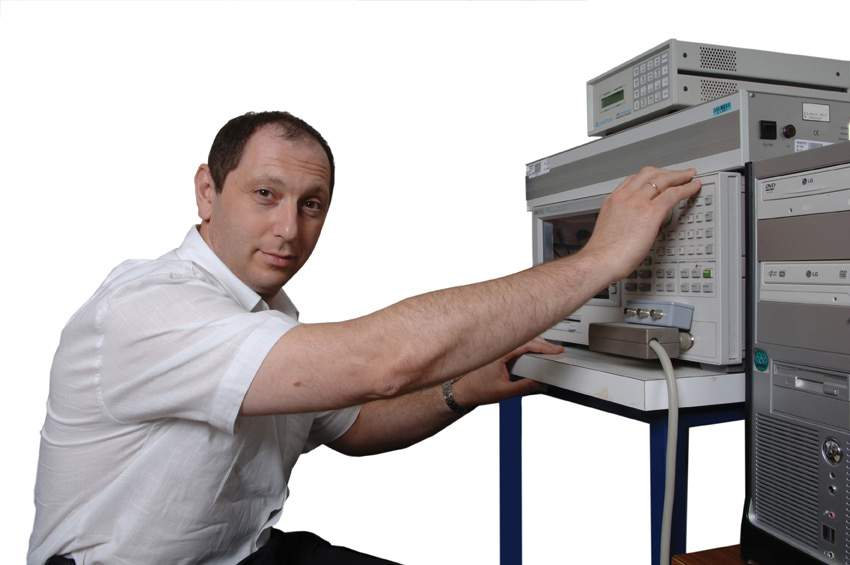Are you a journalist? Please sign up here for our press releases
Subscribe to our monthly newsletter:

One of the unsolved technical challenges holding back the global use of such renewable energy resources as solar or wind is that they’re not always able to deliver power when and where it’s needed. There’s plenty of sun and wind – enough to run all the factories, computers and air conditioners in the world; but supplying that energy on demand is still problematic.
If only we had a way to save the sun’s energy for a rainy day. Coal, for instance, is a form of stored energy: It can be burned at will to create steam, which, in turn, produces electricity. In contrast, solar panels and windmills convert sunshine and wind directly to electricity – useful for powering our homes, but hard to stockpile. Many solutions have been proposed, but most (oversized batteries, for example, or pumping large quantities of water uphill) remain expensive, unwieldy or impractical in other ways. One promising avenue that scientists have been exploring is that of converting the energy obtained from the sun or wind into a form that can be stored, transported and burned at a later date. In the 1980s and 1990s, Weizmann scientists began pursuing methods for storing solar energy in chemical bonds, using highly concentrated solar energy created in the Institute’s solar tower (thermochemical heat pipe).
Now, Prof. Igor Lubomirsky of the Institute’s Materials and Interfaces Department in the Faculty of Chemistry has come up with a novel alternative for converting solar energy into fuel. What’s more, his method is comparatively inexpensive, produces no environmentally hazardous waste and is very efficient. Rather than coal (which takes millions of years to be created and emits pollutants when burned), the new method produces carbon monoxide (CO) – a non-corrosive gas that can be burned directly in turbines or generators, or converted on-site into liquid fuel. Although it’s toxic in high concentrations, CO has been used for over a hundred years as an intermediate chemical product; tens of millions of tons are synthesized each year from coal or wood in one of the most developed of industrial processes.
In Lubomirsky’s approach, the CO is generated from CO2 in a relatively straightforward chemical process using a setup that’s something like a large, hot battery. Inside a special cell, a chemical compound is heated to around 900°C and an electric current is passed through the compound. When CO2 is continuously fed into the cell, the result is pure CO and oxygen.
“CO could be produced right at the smokestack of a power plant or other CO2 source,” says Lubomirsky, “so the greenhouse gases released from the plant would be removed and recycled before they have a chance to hit the atmosphere. The metal used in the process is off-the-shelf titanium, which is many times cheaper and more available than such precious metals as platinum that are often used in similar devices.” Other advantages of the method include a thermodynamic efficiency of over 85% (not counting the energy needed to heat the system), which is almost unheard of in the world of energy conversion, and the ease of transporting and burning CO.
Lubomirsky: “In the future, this method might be used to harvest solar or wind energy in places where it’s plentiful, convert it to CO and store or convert it into a liquid fuel such as methanol. This research is 100% the fruit of Weizmann Institute scientists and resources, especially the Institute’s Alternative Energy Research Initiative (AERI), which supports a number of important research projects in the field.”
Yeda, Ltd., the technology transfer arm of the Weizmann Institute, has applied for a patent for the method, and preliminary tests are planned for the near future.
Prof. Igor Lubomirsky’s research is supported by the Nancy and Stephen Grand Research Center for Sensors and Security; the Phyllis and Joseph Gurwin Fund for Scientific Advancement; Yossie Hollander, Israel; Martin Kushner Schnur, Mexico; Rowland Schaefer, New York; and the Wolfson Family Charitable Trust.
Can one freeze water by heating it? In research that recently appeared in Science, Lubomirsky, working with then research student David Ehre and Prof. Meir Lahav, demonstrated that water can turn solid at different temperatures, depending on the electric charge of the surface underneath. By creating conditions for the charge to be reversed, they found that ice could even form as the surface heated up.
The experiment was based on a long-standing conjecture that an electric charge could promote freezing by causing the water molecules to align with the charge. When water freezes at 0° Celsius, the ice crystals start to coalesce around dust particles or other impurities. But so-called super-cooled water, such as that in high clouds, can stay liquid well below the freezing point if nothing sets off crystallization. Testing the theory was problematic, however, as materials that hold a charge – mostly metals – also act as nuclei for ice formation.
The team solved the problem by placing the water on a special surface made of pyroelectric crystals; these can carry a charge when heated or cooled, but do not provide a nucleus for ice crystals. To their surprise, they found that whereas on a positively charged surface, the water froze at -7°C and on the uncharged surface at -12.5°C; on the negatively charged material, it only turned to ice at -18°C. When they put liquid water on the negatively charged surface, the water turned to ice when that surface was heated from -11°C to -8°C.